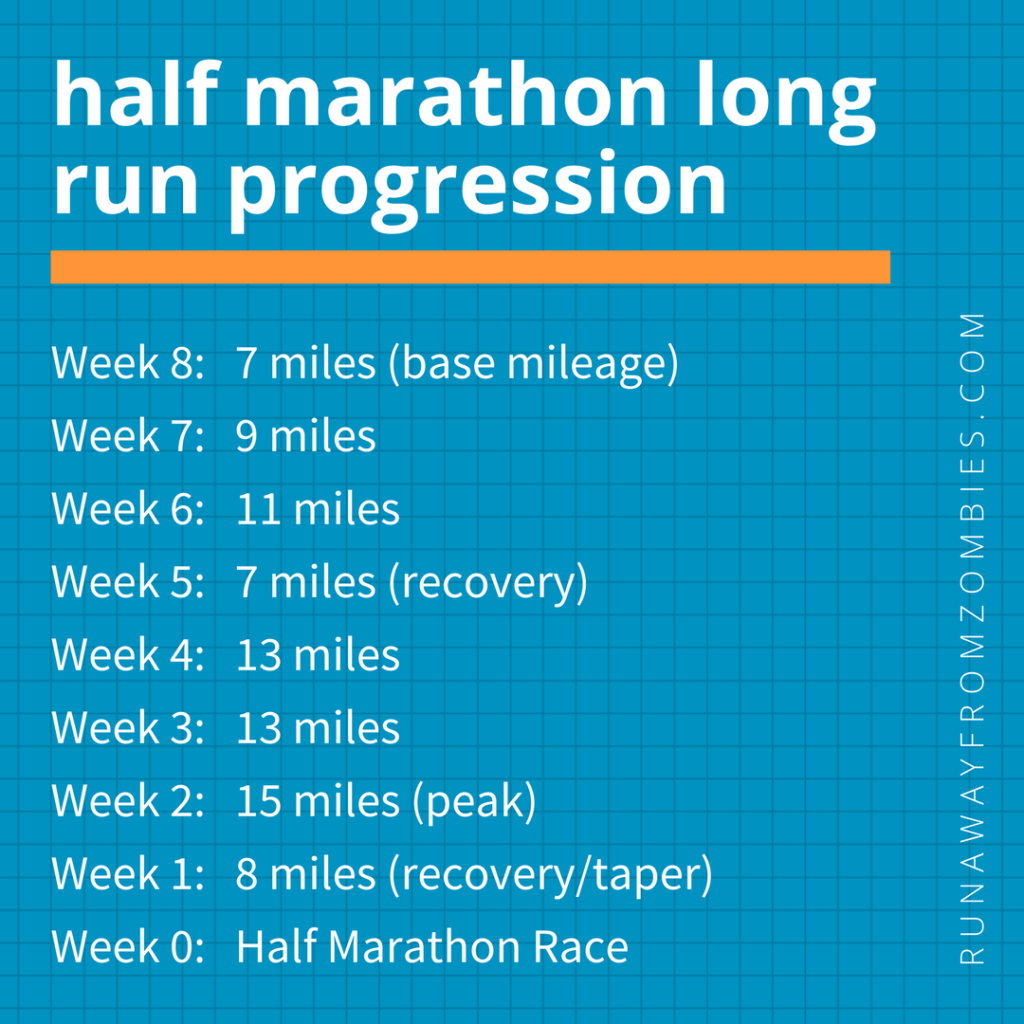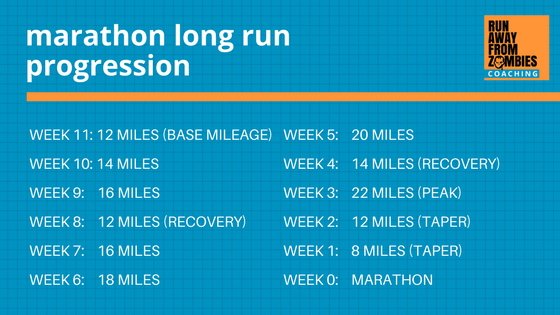The long run is the sacred workout for half marathons, marathons, and ultras, and there is no shortcut to building the long run. You need to plan carefully and work diligently to align fitness peak with race day.
While the Beginner’s Guide to the Long Run explained how to get started, it’s time to answer some advanced questions. This three-week series starts with effectively building the long run during your training season.
Ultimate Guide: Building the Long Run
Base Mileage Long Run
When you’re not training for something, what’s your default weekly mileage? What mileage feels relatively easy to keep up? This is your base mileage.
Your long run during your base mileage can be 25-33% of your weekly mileage. So, 30 miles per week (MPW) would include a 7-10 mile long run. Even base mileage can benefit from variety. You might run 7 miles three out of the four Saturdays, and 10 miles on the fourth Saturday.
Read more: How to Build a Mileage Base
Building the Long Run
Often times you’ll have to increase your long run to prepare for a long-distance race. You’ll need to build up your shorter runs to support your long run, although it’s typically necessary to skew the percentage your long run takes from your weekly mileage into 40-50% of your week’s mileage, especially for the marathon. This is temporary and still must be done with care.
It’s traditional to build the long run in 2 mile or 15 minute increments. This both feels doable when facing the workout and allows you to make significant gains within a month. You’ll find long runs are taxing and you won’t benefit from charging upward relentlessly or indefinitely. That’s where recovery weeks come in.
Read more: Balancing Rest and Running

Recovery weeks
Recovery or cutback weeks are necessary to give your body time to actually adapt to these workouts. You might take a large cutback in your miles every 4-6 weeks, or a less intense cutback every third week. Recovery weeks are crucial as you aggressively add miles or intensity. The best pattern for active recovery weeks is dependent on the runner.
I use “time on feet” to decide the right cutback for a long run. Depending on experience and mileage, 90 min, 2 hour, or 2.5 hour runs might be appropriate. If last week’s long run was a 2.5 hour, 15 mile long run. I’d assign a 90 minute long run as recovery, dividing by pace to get 9 miles. Thinking about ‘time on feet’ makes you consider what would actually be a break, rather than just cutting a few miles off the top.
Overdistance
If you start with a higher mileage base, you can build your mileage less aggressively and reach distances over your race distance. For a half marathon, long runs of 15-16 miles can build your endurance, improving your half marathon performance.
If you’re starting with a lower mileage base, it’s risky to aggressively build to overdistance amounts. In this case you’ll often perform better on race day if you don’t reach the race distance in training. Pushing too hard can lead to overtraining and the sluggish, exhausted body that comes with it.
Read More: Overtraining – Just Say No

Your Longest Long Run
Runs over three hours are taxing on the body and require a lot of recovery. There’s only so much fitness that one run can build, and it’s going to hurt the rest of your week. Runs of 3.5-4 hours should be carefully planned with a purpose in mind.
The 20 miler most runners do in preparation for a marathon typically falls into that time range. This run can be an extreme confidence booster, but also exhausting. Consider the long runs before and after it and adjust all three accordingly.
Balance time on your feet and recovery to decide the length of your longest run. You can perform well with a longest run of only 16 miles or even if you unintentionally miss your longest run. There is no magic in 20, but the magic you give it.

Tapering
Schedule your longest/hardest long run 2-3 weeks out from your marathon. A one week taper is usually sufficient for a half marathon. Longer tapers might be beneficial if you’re running overdistance.
Don’t just blindly do the traditional 12 mi/8 mi for your marathon taper. If your pace is slower, you might end up with less rest than other racers. You need just as much rest as them! Consider time on feet — 120 minutes/60-75 minutes might be a better guideline.
Read More: How to Taper & How to Not Go Crazy During a Taper
Adding Races while Building the Long Run
A relevant, tune-up race is worth its weight in gold, even at the expense of one of your long runs. However, too many races can butt into your long run training, making it difficult to safely increase mileage and the gains that come with it. A compromise can be made by adding warm up miles and cool down miles to races to make them long runs.
Read More: 5 Race Scheduling Mistakes

A Harder Long Run?
As you start, the distance of the long run is stimulus enough. If you’re experienced and have settled into high mileage, you’ll need to make the long run harder – and that doesn’t necessarily mean adding more miles. Next week we’ll talk pacing about the long slow run and some of its speedier counterparts.






so much fantastic info on here, : D.